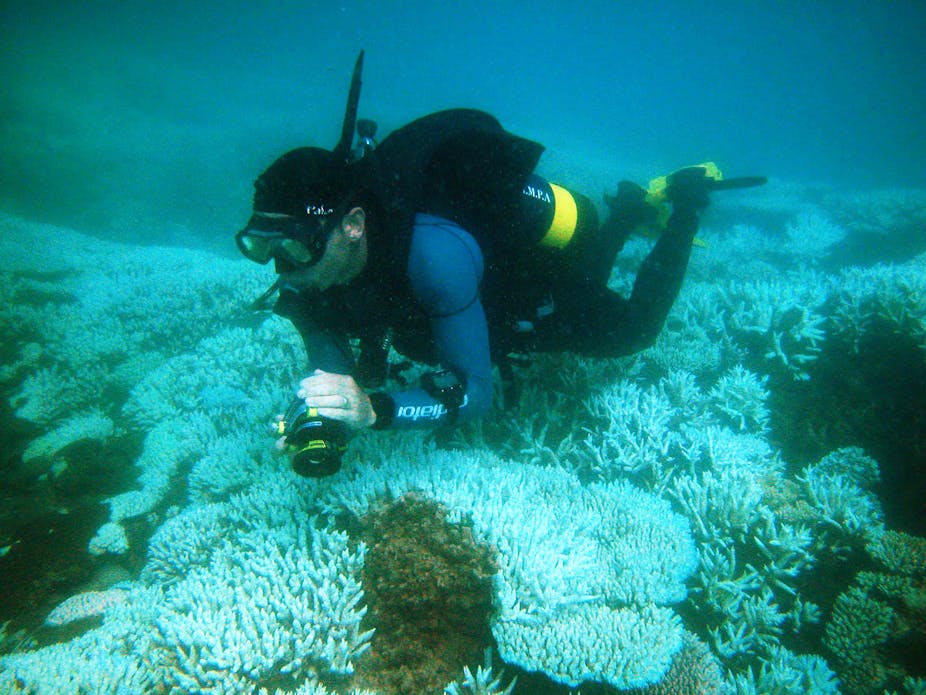Unconventional tactics, including using shade cloth to protect corals from heat stress, must form part of future ocean management and conservation plans, argues a scientist from the University of Queensland.
In a paper published in Nature Climate Change today, Ove Hoegh-Guldberg, director of the Global Change Institute at the University of Queensland, together with Greg Rau of the Institute of Marine Sciences at the University of California, and Elizabeth McLeod of The Nature Conservancy, say new tactics are needed to save oceans from CO2 emissions.
“It’s unwise to assume we will be able to stabilise atmospheric CO2 at levels necessary to prevent ongoing damage to marine ecosystems,” Professor Hoegh-Guldberg said.
“In lieu of dealing with the core problem – increasing emissions of greenhouse gases – these techniques and approaches could ultimately represent the last resort.”
In addition to using shade cloth over coral reefs, the paper suggests novel marine conservation options, including applying low-voltage electrical current to stimulate coral growth and mitigate mass bleaching; adding base minerals such as carbonates and silicates to the ocean to neutralize acidity; and converting CO2 from land-based waste into dissolved bicarbonates that could be added to the ocean to provide carbon sequestration.
“We need to remember that all of these ideas are extremely costly, especially when compared to solving the core issue of reducing CO2 emissions,” Professor Hoegh-Guldberg said. “If we address emissions, the costs are a tiny fraction of global GDP growth each year.”
Such measures are likely to be small-scale solutions said Alistair Hobday, marine and atmospheric research scientist at CSIRO.
“They will probably have a place when things get very desperate but may not be true mitigation measures,” Mr Hobday said.
Despite this, Mr Hobday said novel solutions are required. “We need to be mature enough to listen to all sorts of arguments.”
Mr Hobday likened the solutions to triage: “You decide who needs the help and then you just get in there”.
Similar examples in science include putting light coloured sand over black sand on beaches to help turtle reproduction, and rescuing chicks before returning them to the nest during periods of extreme flooding, Mr Hobday said.
The reports authors acknowledge in the report that short of stabilising if not reducing atmospheric CO2, there may ultimately be no satisfactory conservation options for the ocean, either globally or regionally.
“However, now is the time to find out,” they write.

